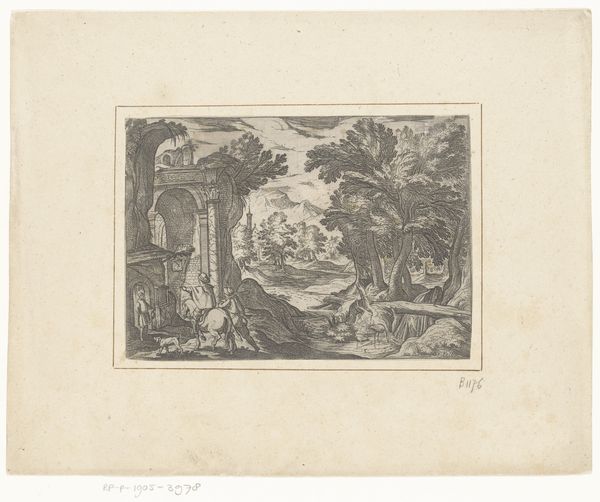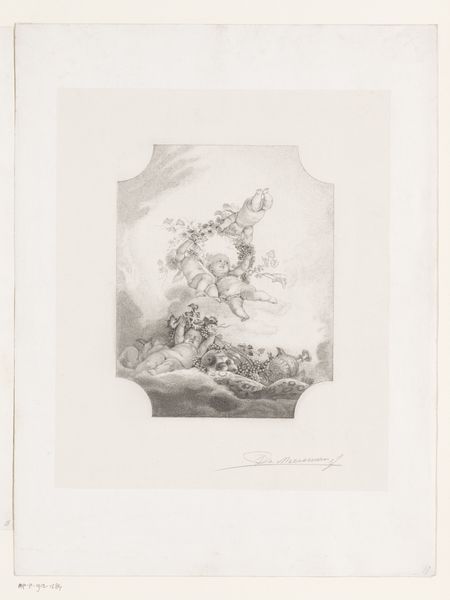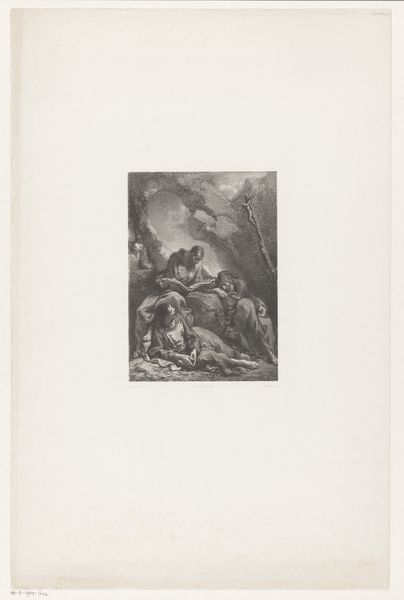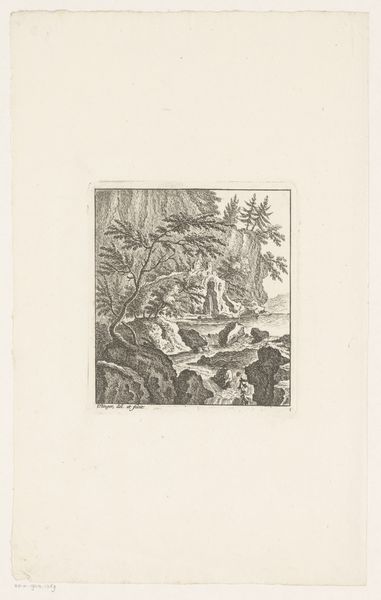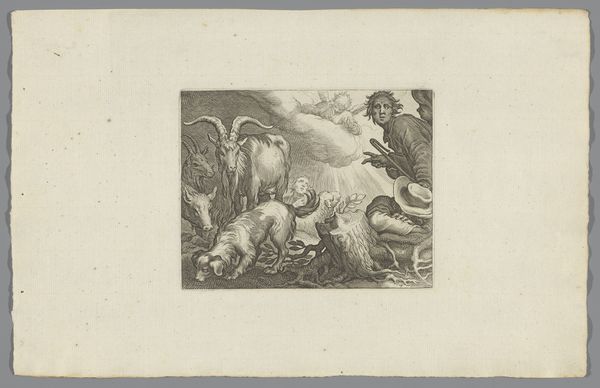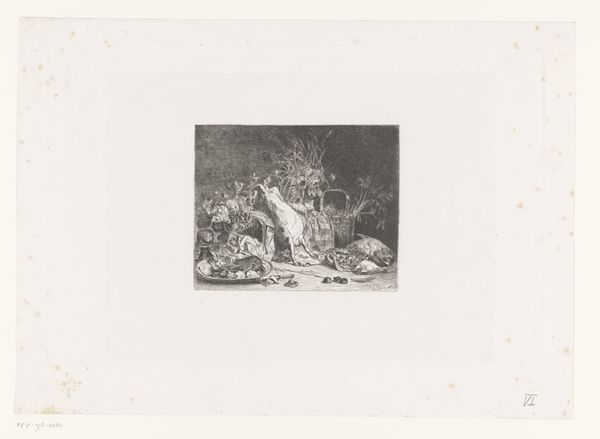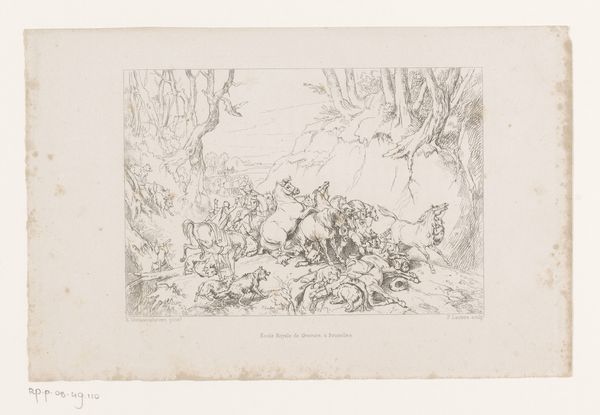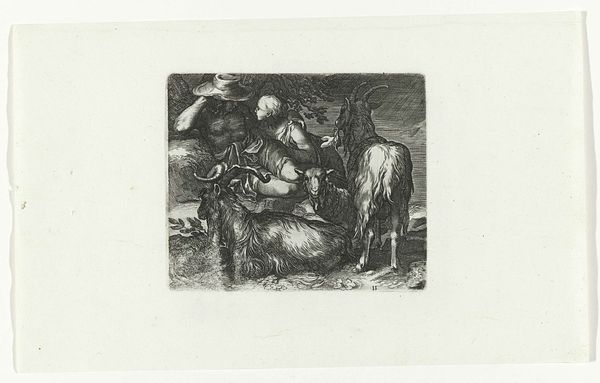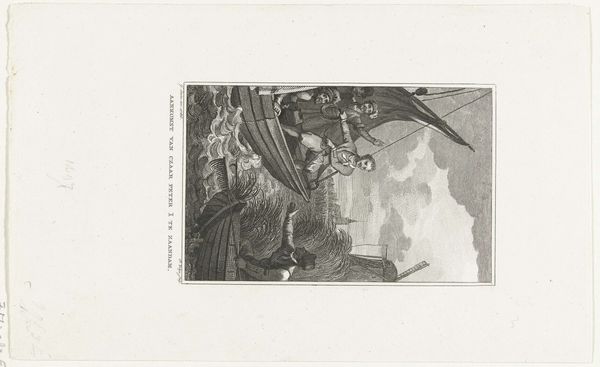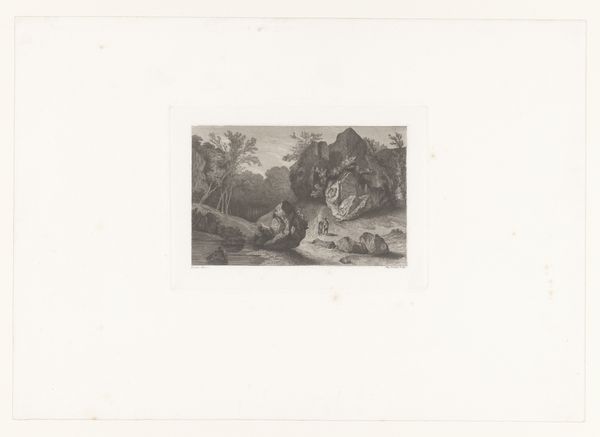
De dodelijke val van Willem III tijdens een jachtpartij, 1702 1794
0:00
0:00
reiniervinkeles
Rijksmuseum
Dimensions: height 231 mm, width 153 mm
Copyright: Rijks Museum: Open Domain
Editor: This engraving, “The Fatal Fall of William III during a Hunting Party, 1702” by Reinier Vinkeles, was made in 1794. There’s a sense of chaotic energy in the composition, the way the horse and rider are tumbling. What historical context is important for understanding its message? Curator: Well, this piece is rife with political undertones if we consider the historical context. William III's death was highly consequential, impacting the balance of power in Europe. Consider the depiction of the fall itself. Is it just an accident, or could Vinkeles be commenting on the fragility of power, the precariousness of leadership in a turbulent era? What do you see in the landscape surrounding the event? Editor: The landscape seems pretty standard, maybe even romanticized. Lots of trees and a bit of classical architecture off in the distance...I'm not sure how that connects to the politics. Curator: Perhaps Vinkeles is intentionally contrasting the idealized vision of a ruler at one with nature – a common Baroque trope – with the brutal reality of the accident. How does the contrast change our perception of the event, and perhaps of William III’s reign? What statement might he be trying to make about divine right versus human vulnerability? Editor: So the classical elements would point towards power, and nature displays the opposite? By that reading, the landscape serves as a site of ideological contest. It makes you wonder if the artist had personal feelings about William. Curator: Precisely! And it highlights how even seemingly straightforward historical depictions are embedded with the biases and perspectives of the artist and their time. By acknowledging the social and political fabric in which artworks are created, we come closer to a more thorough interpretation. Editor: This is such an interesting take! Thanks, it really shifted how I was viewing the artwork, and introduced fascinating questions that relate art to social dynamics and hidden meanings. Curator: It goes both ways, looking through the lens of now can always sharpen understanding about what went into forming our visual history.
Comments
No comments
Be the first to comment and join the conversation on the ultimate creative platform.
